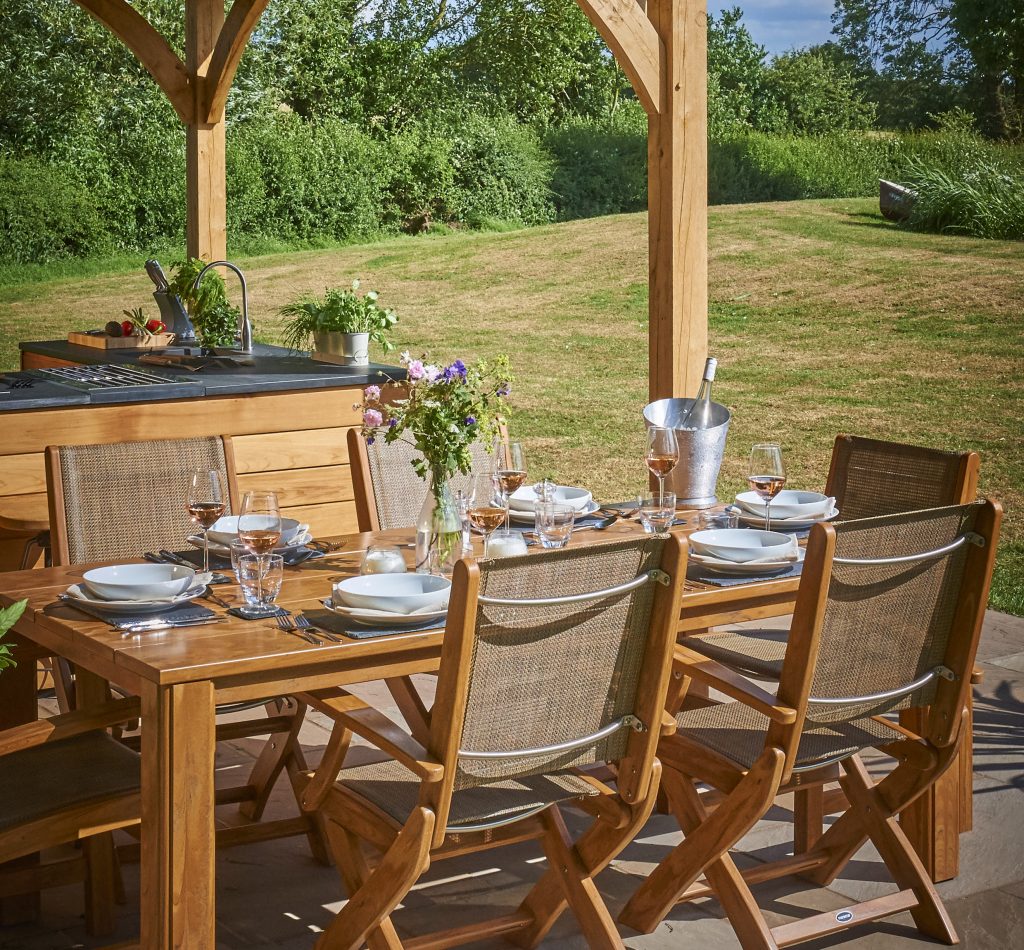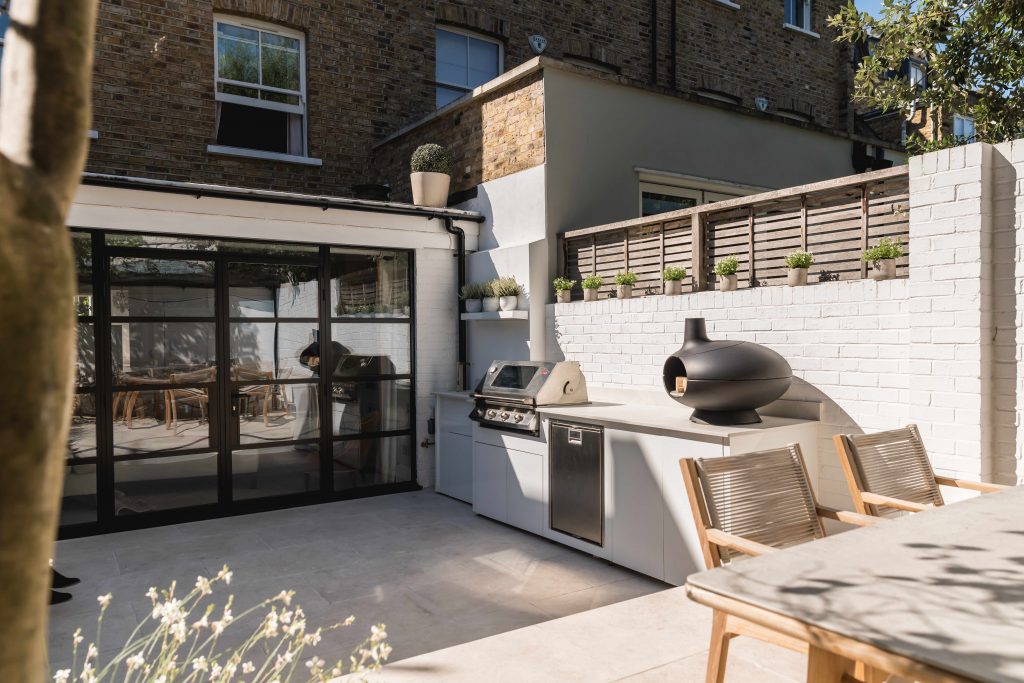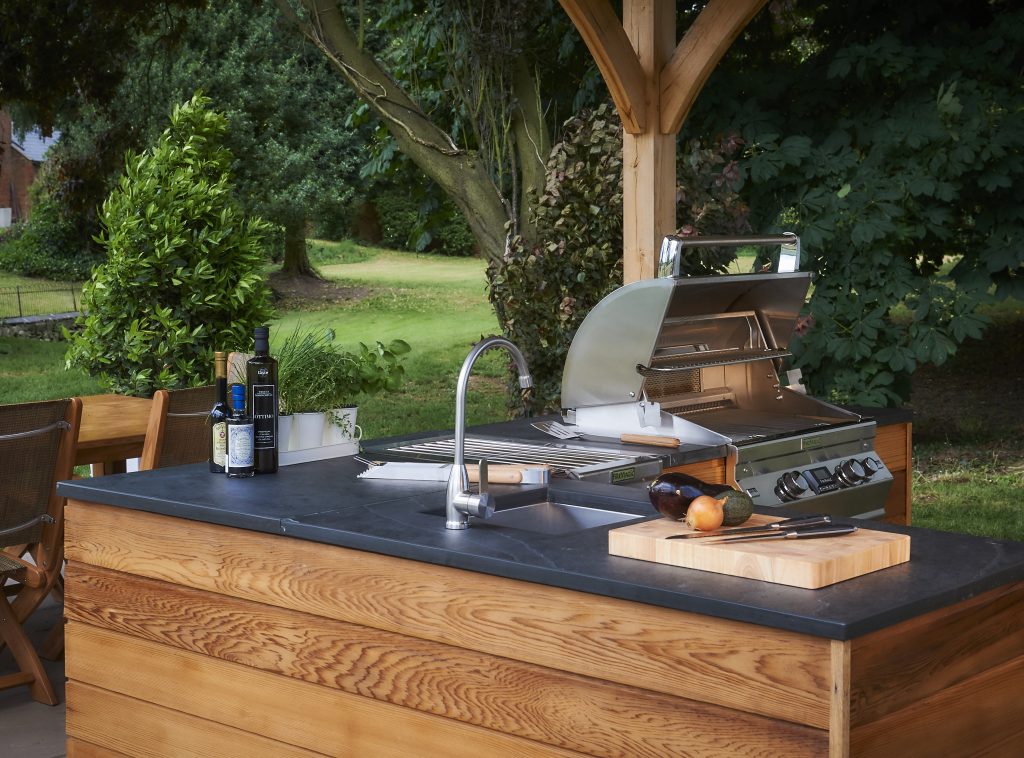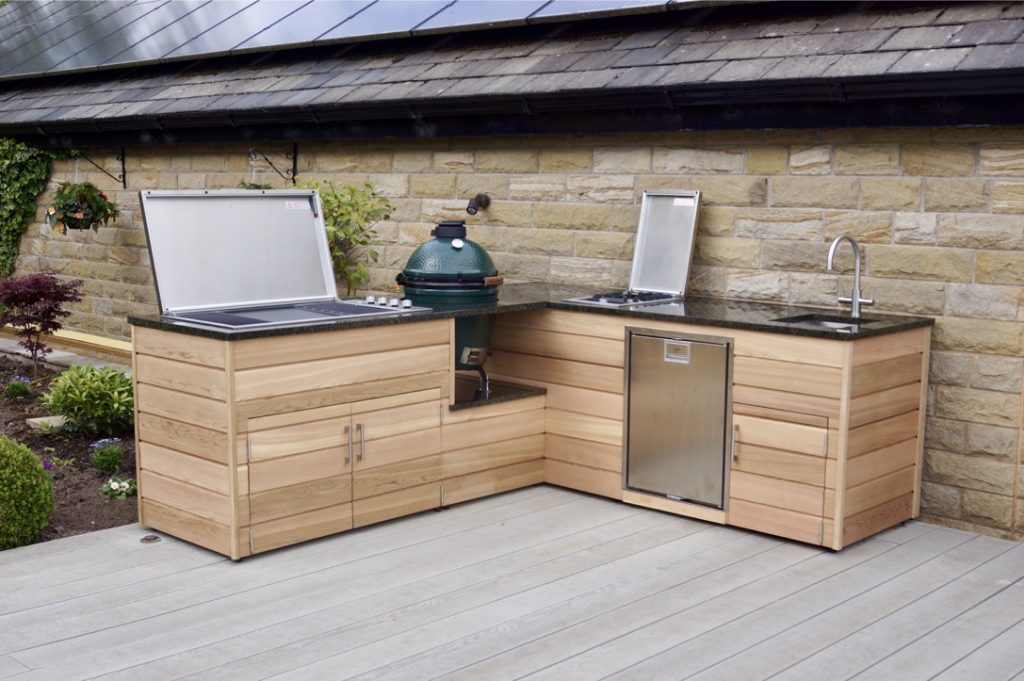Creating an outdoor kitchen
Creating an outdoor kitchen
Looking forward to those long summer days with a tasty barbecue and icy drinks?
An outdoor kitchen-dining area is a great way to upscale your garden. It offers an entirely new space to entertain as well as a different way to cook. Impromptu alfresco meals have long been popular in warmer climates. After months of lockdown, we Brits are now embracing the trend and creating kitchens in our gardens too. Some are as expensively equipped as their indoor counterparts while others are rustic and recycled. Fresh air adds flavour even to the most basic barbecue and for summer parties, outdoors is the only way to go.
Location, location, location

Image supplied by CENA Outdoor
Begin by choosing the location – take time to think about how you want to use the outdoor kitchen. Will it be for intimate family meals or larger social gatherings - or both? Think about how the sun moves around your garden. Try to find a sunny, sheltered spot with space for cooking and dining,
Jacques Shelton, director of CENA Outdoor, said: “Think about which area is sunny at the times when you would use the kitchen most – afternoons and evenings in the summer most likely and any prevailing wind. You might also want to consider whether you would like the outdoor kitchen near the house for convenience or choose a location further into the garden itself. Proximity to neighbours is worth bearing in mind, so you can both forget about disturbing each other.”
Could you utilise an existing garden deck or terrace to provide stable footing for a barbecue/grill and table? Do you grow your own fruit and veg? Will you use your outside kitchen for prepping delicious meals and pickling in summer? If so, perhaps your outdoor kitchen could be close to the fruit and vegetable patch.
Indoor/outdoor kitchen

Image supplied by CENA Outdoor
If your budget allows, consider replacing one of your kitchen exterior walls with a run of bi-fold or sliding glass doors that open onto a patio with a cooking terrace and dining area. This will do a great job of blurring the indoor/outdoor boundaries as well as add lots of extra light. These glazed doors can essentially make whole walls disappear. Ask a structural engineer to check if the wall you want to remove is load bearing. He or she will advise if the building will be structurally sound with a bigger window opening or need extra supports.
Using the same floor tiles, colour scheme and even countertops inside and out can help make the transition between the two spaces look seamless. An indoor/outdoor kitchen is perfect for small courtyard gardens as it creates the impression of one big space. Plus, if the outdoor kitchen is close to the house, water and electricity supply is not a problem.
Kitchen at the bottom of the garden

Image supplied by CENA Outdoor
This is a chance to flex your creative muscles and design a contrasting scheme in terms of aesthetics. While your indoor kitchen might be all glossy surfaces and luxury appliances, its outdoor counterpart could run to the rustic and recycled. Think rough-hewn timber cupboards and rugged concrete worktop.
If you have a sizeable garden and want to locate your outdoor kitchen at the bottom of it, think about food preparation and cooking areas as well as a place to clear away dirty dishes and pots. You may want to deck out your high-end barbecue with an outdoor sink, fridge and extra storage. This means you can cook freely without having to rush in and out the house to fetch ingredients.
Be aware outdoor sinks will require plumbing and access to mains drains. Speak to a contractor first before deciding the location of your outdoor kitchen as the cost of water supply and drainage can be considerable. The ideal time to install water supply for an outdoor kitchen is as part of a landscaping scheme or renovation/extension when groundworks are taking place and before decking or paving is laid.
Design & layout

Image supplied by CENA Outdoor
Outdoor kitchens need to provide not only extra entertaining space but also to allow the chef to still socialise. So, think about the overall layout. A galley-style set-up can work well with the barbecue and grill facing the dining area. This way the chef doesn’t have his or her back to the guests. Or how about an L-shape work surface with a bar and stools at one end?
Do you want to grill, bake pizzas or roast the Sunday joint? This will help decide the type of appliances you need. Some of the most charming alfresco dining areas are the simplest. But if you have the cash to splash there are luxury outdoor kitchens with barbecues, side burners, integrated sinks, outdoor fridges and plenty of storage.
Shelton said: “The design and layout of an outdoor kitchen is largely governed by three things - the space you have available, your budget and the fixtures and fittings you would like to include. If you want a sink, fridge and plenty of storage as well as a grill and worktops, you need more space in the design.”
Weatherproofing
When cooking and eating outside, your guests will need some protection from the elements whether it’s blazing sunshine or sudden showers. A timber frame gazebo with draping foliage can provide a green canopy as well as a bit of protection from the rain. Or you may prefer a lattice metal frame pergola for a more elegant look.
Train a climbing plant over the structure, such as honeysuckle or wisteria, for fragrance and beauty. Grapevines provide a good dense canopy for shade and fruit from midsummer to early autumn. Gazebos and garden rooms can provide an all-weather cooking and dining space. Shelton said: “If you want to install a garden building or canopy over the area then permitted development may allow it, but also impact on where you position the area in relation to boundaries.”
Other options include retractable roller shades and a tough fabric sail set which can be put or down depending on the weather.
What about heating and lighting?

Image supplied by CENA Outdoor
When the sun sets and the party continues, do you want lighting and heating? It is worth it to keep your guests warm and the conversation (and drinks) flowing. Think about incorporating a fire pit into your outdoor kitchen layout for chilly evenings and toasting marshmallows.
A couple of strategically placed exterior lights can illuminate the dining area while a string of fairy lights adds a party vibe. Make sure you have enough outdoor electrical outlets for your needs. As with any indoor project, outdoor kitchens should only be installed by registered electricians to make sure they are safe to use. All appliances will need to be rated for outdoor use.
Outdoor kitchens come in all shapes and sizes. Some are mobile while others are bespoke and built-in. Shelton said: “A bespoke outdoor kitchen means that you can marry up the materials and style with the aesthetic of your home and garden, and having a built-in style enables the inclusion of hot and cold water supply and plumbing, which will open up an array of additional options such as refrigeration, heating, lighting, even audio visual options so is well worth considering.
“Of course, a mobile outdoor kitchen has its own benefits too, including the ability to move it to the sunniest spot at any given time!”
Thanks to CENA outdoor for their help with this article.
